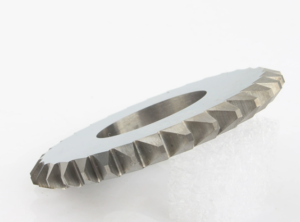Table of Contents
ToggleCarbide Tipped Circular Saws
In the world of woodworking and construction, precision is key. One tool that has become a staple among professionals and DIY enthusiasts alike is the carbide tipped circular saw. This powerful tool not only enhances cutting efficiency but also provides superior longevity compared to traditional saws. Understanding the benefits and applications of a carbide tipped circular saw can help you make informed decisions for your projects.
Why Choose a Carbide Tipped Circular Saw?
A carbide tipped circular saw is specifically designed to tackle tough materials with ease. The carbide tips are crafted from durable tungsten carbide, which allows the blades to maintain their sharpness longer than standard steel blades. This feature saves you time and money in the long run, as you won’t need to replace blades as frequently.
Take, for example, a contractor tasked with cutting through composite decking. A carbide tipped circular saw will glide through the material effortlessly while maintaining a clean edge, unlike a standard blade that might struggle and cause splintering. Customers looking for efficiency and durability in their tools often find that investing in a carbide tipped circular saw pays off in better performance and reduced project time.
The Benefits of Carbide Tipped Blades
1. Longevity and Durability: The construction of a carbide tipped circular saw ensures that your cutting tool lasts longer. Carbide is much harder than steel, which means the blades don’t dull as quickly. For instance, a woodworker using these saws for frequent cuts in hardwood can enjoy a razor-sharp blade for much longer than with a standard saw.
2. Precision Cutting: Precision is critical for professional projects. A carbide tipped saw provides cleaner cuts with less tear-out, making it the preferred choice for applications like cabinetry where the finish is crucial. For example, a cabinet maker can achieve smooth edges using a carbide tipped saw, leading to a higher quality final product that meets customer expectations.
3.Versatility: Carbide tipped circular saws are suitable for a multitude of materials. Whether you’re cutting through wood, laminate, or even metal, the right carbide tipped blade can perform admirably. Imagine a contractor needing to switch between cutting plywood for framing and metal sheets for roofing; this tool’s diversity allows for seamless transitions without the need for multiple saws.
4. Cost-Effectiveness: While the initial investment for a carbide tipped saw may be higher than that of a standard saw, the long-term savings can be significant. Due to the decreased need for blade replacements and the reduced labor costs associated with cleaner cutting, users often find that they recover their investment quickly through improved efficiency.
Applications of Carbide Tipped Circular Saws
Understanding where a carbide tipped circular saw can be most beneficial can further enhance your purchasing decisions. Here are key areas where these saws shine:
1. Construction
In construction, time is money. Workers rely on tools that can deliver reliable performance to meet deadlines. A carbide tipped circular saw is perfect for framing, as it can cut through various types of lumber and engineered materials without bogging down or producing uneven cuts. For example, when framing a new home, contractors can quickly make precise cuts in treated lumber and plywood, allowing them to move on to the next phase of the project efficiently.
2. Remodeling and Renovation
During renovation projects, homeowners often need to make cuts in materials like drywall, hardwood, or plywood. A carbide tipped circular saw allows for clean cuts that reduce the need for additional finishing work. Picture a homeowner renovating a kitchen and needing to cut new cabinets—a carbide tipped saw will help achieve dovetailed joins with clean lines, ensuring that the finished look is polished and professional.
3. Furniture Making
In the realm of furniture design, attention to detail is paramount. Using a carbide tipped circular saw, artisans can achieve precise cuts in hardwoods and veneers, resulting in high-quality furniture pieces that stand out in the marketplace. Consider a craftsman creating a custom table; the ability to make accurate cuts without tear-out ensures that there’s little to no sanding required afterward, allowing for a quicker completion time.
4. Metalworking
Metalworking is another area where carbide tipped circular saws excel. Specialized blades allow the saw to cut through aluminum and thin sheets of steel without damaging the material. For example, when fabricating metal frames or supports, a carbide tipped circular saw offers the ability to produce sharp, accurate cuts that are crucial for the structural integrity of the project.
Making the Right Purchase
When considering purchasing a carbide tipped circular saw, there are several factors to keep in mind. Look for blades suited to the material you’ll be working with, as different applications require specific tooth configurations and design features. Additionally, consider the power of the saw itself—ensure the motor can handle the types of cuts you intend to make without overheating or stalling.
In conclusion, a carbide tipped circular saw is an invaluable tool for anyone serious about cutting precision. Whether you are a professional contractor, a furniture maker, or a DIY enthusiast, understanding the benefits and applications of this saw can help you improve your craft. By investing in a high-quality carbide tipped circular saw, you can save time, enhance the quality of your work, and increase your overall productivity. The move to this versatile, durable, and efficient tool may very well transform how you approach your cutting projects, ensuring both satisfaction and superior results.
